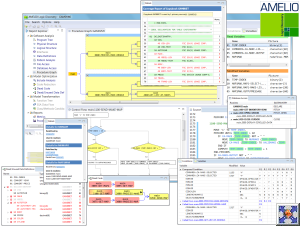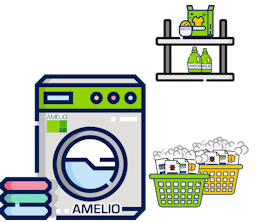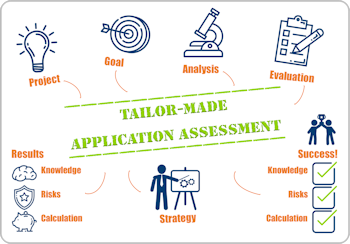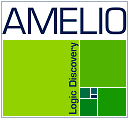- Do you value the functionality and reliability of your COBOL and PL/I applications?
- Are you struggling with the complexity and do you lack precise knowledge about the implementation of the functionality?
- Have you also been reducing your investment in existing backend applications for a long time and your experts and knowledge carriers are on their way to retirement?
- Do you want to modernise your operational backend applications and benefit from new technologies while playing it safe with all changes?
We discuss 4 steps that will help you to modernise your applications securely and sustainably. Read now:
Best Practices for Application Modernisation
Although there are countless reasons for application modernisation, the overarching goal is always to reduce the risks of legacy applications, save costs, increase organisational agility with modern IT and, last but not least, be attractive to new specialists.
The following 4 steps will help you to modernise your applications securely and sustainably.
- Custom-fit Assessments for good decisions: For detailed information, read ‘4 Important Steps for Sustainable Software Modernisation (Step 1: Custom Fit Assessments)’
- Automated Application Analysis for a comprehensive and accurate (re)understanding of the implemented application logic in order to reduce risks and costs for modernisation or new implementation and ensure easy knowledge transfer. For detailed information, read ‘4 Important Steps for Sustainable Software Modernisation (Step 2: Automated Application Analysis)’
- Agile Clean-up to optimise the use of your resources.
- Fully Automated Transformation for a completely secure and flexible modernisation.
Simplify Your Legacy Application Modernisation
For almost 50 years, our customers have benefited from our automated solutions to develop their customised IT applications securely and sustainably while reducing costs and risks. From our experience with very large projects, we can say that most of the applications developed in COBOL and PL/I or created by generators are very large and complex because the business logic they implement is extensive and complex.
Application size, complexity and strong interconnectivity of the individual components, code that is no longer required in the applications as well as a lack of knowledge about the applications' implementation and inappropriate documentation hinder safe, effective and efficient modernisation.
So, how do you gain a comprehensive and accurate understanding of the applications that enables secure modernisation and flawless transformation of your valuable legacy applications into future-proof applications?
So, how can you attain good decisions and realistic planning, get a comprehensive and accurate understanding of the applications and execute a reliable clean-up that enables a secure modernisation and error-free transformation of your valuable legacy applications into future-proof applications?
Step 1: Custom-fit Assessments
Step 1
Custom-fit Assessments for Good Decisions
So, how can you attain good decisions and realistic planning that enables a secure modernisation and error-free transformation of your valuable legacy applications into future-proof applications?
The solution is an assessment. But, be careful: It is not enough - as many providers propose - to simply list a few figures about the approximate size and number of modules in order to receive reliable estimates of the effort and costs. The risks, as so often, lie in the details.
Of course, rough decisions and gut feeling could also lead to success. As a rule, however, they lead to delays (also in other projects) and significant cost increases and, unfortunately, often also to the failure of modernisation projects.
In its Chaos Report 2019, the Standish Group reports that 83.9% of IT projects fail partially or completely. The following reasons for failure are repeatedly cited in studies:
- Badly defined requirements
- Poorly defined or unrealistic planning
- Inaccurate and unrealistic estimates
The modernisation projects that we have implemented for large financial service providers have shown that only a complete analysis of all sources in advance provides reliable information. The emphasis here is placed on Complete and All. This is the only way to recognize all obstacles and dependencies. This is the only way to make good decisions and eliminate the risks.
Tailor-made Assessment - Why?
Simply collecting all the data about your applications will not help you to reliably assess the risks and costs of extensive changes. This can only be achieved by an analysis that is precisely tailored to your project goal and your applications.
Our projects have shown us that a targeted and individually tailored analysis of the applications is a crucial basis for:
- The exact definition of the requirements
- Reliable planning
- Inaccurate and unrealistic estimates
The modernisation projects that we have implemented for large financial service providers have shown that only a complete analysis of all sources in advance provides reliable information. The emphasis here is placed on Complete and All. This is the only way to recognize all obstacles and dependencies. This is the only way to make good decisions and eliminate the risks.
Tailor-made Assessment - Why?
Simply collecting all the data about your applications will not help you to reliably assess the risks and costs of extensive changes. This can only be achieved by an analysis that is precisely tailored to your project goal and your applications.
Our projects have shown us that a targeted and individually tailored analysis of the applications is a crucial basis for:
- The exact definition of the requirements
- Reliable planning
- The realistic assessment of the risks and efforts
A tailor-made assessment finds all stumbling blocks and helps to precisely define the requirements for a project, enables precise planning and thus paves the way for the successful implementation.
What Can We Do for You?
If you want to ensure the success of your modernisation projects, find out about the possibilities of our tailor-made application assessments.
You can find an initial overview in our flyer “Application Assessment: Don't Guess – Assess”.
Download Language: Englisch - Version: mt21085.02

Tailor-made application assessments enable you to pinpoint and to reliably evaluate all critical issues for your projects. They help you to accomplish your projects in the areas of modernisation, migration, mass changes and clean-up of your COBOL and PL/I applications successfully in time and in budget.
Read moreEvery project is different and our flyer just gives you a first general idea. To get the best solution for you, you should directly discuss the requirements and details of your project with us.
Step 2: Automated Application Analysis
Step 2
 Automated Application Analysis – Why?
Automated Application Analysis – Why?
Regardless of whether you want to modernise the functionality of your backend applications by changing the data management system or replacing individual technology modules, or whether you want to redevelop them using ‘modern’ languages, you always need to know exactly what is currently implemented and how it is implemented.
Understanding large and complex applications is a Herculean task! Especially if you have not developed the applications yourself and even more so if the original developers are no longer available. The documentation - if available and up-to-date - does not provide the knowledge about the implementation of the functionality that is necessary for understanding and modernising or rewriting.
Even if the applications were originally well structured, this design has often suffered over the decades. Old architectures and techniques are used. New code was repeatedly added to fulfil new requirements. However, code that was no longer needed was rarely removed, as there was no real certainty that this code was no longer needed under any circumstances and the cost and effort of testing was spared. It is generally estimated that the proportion of ‘dead code’ in applications increases by around 10% per decade. This also prevents precise understanding.
Poor understanding of existing applications leads to
- poorly or even incorrectly defined requirements
- poorly defined and unrealistic planning
- unrealistic estimates of risks and expenses
- errors during modernisation or new implementation
Read also ‘Chaos Report 2019 by the Standish Group’ for more details.
In addition, a lack of understanding of existing applications usually also leads to delays (also in other projects) and significant cost increases and, unfortunately, often to the failure of modernisation projects.
Really Understanding Applications – A Dream?
The truth or rather the entire knowledge about your applications, their functionality and their actual implementation is in the current source code!
But beware: It is not enough - as many providers propagate - to simply visualise the application code, data usage and possibly also the dependencies. Some tools, especially those that are also used for maintenance, also offer step-by-step execution of the code. All of this is not enough to really understand the applications and their implementation.
But, the good news is: this knowledge can be recovered quickly using our automated application analysis.
Proper Structuring and Logical Abstraction
Real understanding can only be gained through the right structuring and logical abstraction, through the ability to view the analysed code under varying aspects and from different perspectives and, above all, to be able to abstract the implementation across multiple levels.
The aim is not only to visualise the physical code and data structures, but also to determine the logical components of the source code and the conditions for their interaction. This is the only way to derive the implemented functions, their interfaces and the conditions for their execution.
To simplify knowledge transfer, onboarding and subject-specific communication, the information also needs to be presented in a language-neutral way.
Automated Application Analysis with AMELIO Logic Discovery
AMELIO Logic Discovery is an innovative analysis tool that helps you to better understand your native and generated COBOL, PL/I and Delta ADS applications and to comprehensively secure the relevant functionality.
Through in-depth and comprehensive analyses of the applications, AMELIO Logic Discovery determines
- what is implemented
- how it is implemented
- which logical relationships exist
- which components form a logical unit (procedures, composites, ...)
- the conditions under which procedures and components are called or executed
- what the interfaces of these components look like
- which data structures are used, how and where (definition, scope, ...)
 The implementation details are abstracted, the information obtained is connected, logically structured and the knowledge about the functionality of the application is derived. The result is a clear, language-neutral and technology-independent visualisation of the application logic, in which users can navigate freely across all levels, in topic-related views and in selectable levels of detail, so that your teams can easily understand the applications.
The implementation details are abstracted, the information obtained is connected, logically structured and the knowledge about the functionality of the application is derived. The result is a clear, language-neutral and technology-independent visualisation of the application logic, in which users can navigate freely across all levels, in topic-related views and in selectable levels of detail, so that your teams can easily understand the applications.
The modernisation projects we have accomplished for large companies have shown that a precise understanding of the functionality of the existing applications and their implementation is essential for the success of modernisation projects.
AMELIO Logic Discovery offers new, flexible and well-structured views of our applications. Especially the logical views help to find and understand the crucial points in our applications.
Marcel Rozema (Senior Software Architekt, RDW)
AMELIO Logic Discovery offers you a reliable basis for your application modernisation, for the elimination of technical debt, for decisions on the next development steps, for new development with modern languages and for many other tasks.
The AMELIO Tool Family
AMELIO Logic Discovery can be extended according to your specific needs. For example, it is possible to use code-smell analyses to determine whether company-specific coding standards are being violated and, if so, where. For modernisation projects, the ‘points of interest’ and thus possible crucial points can be determined automatically.
Especially for clean-up and modernisation projects, AMELIO Logic Discovery can be combined with other tools from the AMELIO family to perform the necessary changes to the source code in a fully automated and audit-proof manner.
Our tools help you to analyse COBOL, PL/I and Delta ADS applications in a targeted manner, to adapt them quickly and securely to new requirements and technical infrastructures and to reliably assess risks.
This (and more) is what we can do for you!
If you want to reduce the risks and costs for your modernisation projects and to make it easier for your teams to really (re)understand your applications, then find out now about the possibilities of our automated application analysis with AMELIO Logic Discovery.
We offer you an initial overview in our flyer ‘Analysis for COBOL & PL/I - (re)understanding applications’
Download Language: Englisch - Version: MT21098.02

AMELIO Logic Discovery is an innovative analysis tool that helps you to better understand your native and generated COBOL, PL/I and Delta ADS applications and to comprehensively secure the relevant functionality.
Read moreFurther information on AMELIO Logic Discovery can also be found here:
AMELIO Logic Discovery: Really Understanding COBOL, PL/I, Delta ADS Applications
Every project is different and our flyers only give you an initial overview. To get the best solution for you, you should discuss the requirements and details of your project with us directly.
Step 3: Agile Clean-up
Step 3
 First Clean Up, Then Modernise - Why?
First Clean Up, Then Modernise - Why?
How often have you removed code from productive applications? Were you sure about it or did you feel queasy because you were not 100% sure whether this code would really never be needed again? Or did you simply add the new functions, thinking that code that won't be executed won’t do any harm? And if you only add code, you only need to test this code. So everything is OK? Not at all!
With the important backend applications in COBOL and PL/I, which have been in use for decades, it is not uncommon for 25 - 40% of the code to be no longer required. This code impairs readability, makes it difficult to understand the applications and not only drives up maintenance costs, but it is also a significant hurdle to modernisation and obstruct development processes.
Technical debt and neglected clean-ups in productive applications are responsible for
- poorly defined and unrealistic project planning
- higher maintenance costs and maintenance delays
- slower development and higher workload for developers
- bumpy development processes
- greater risk due to security vulnerabilities
- larger module sizes and therefore higher system load
- higher costs and risks for modernisation projects
- lack of future sustainability of applications
- poorer support for business processes
- and much more ...
It is therefore worth to execute clean-ups and the elimination of so-called technical debt before starting to modernise and also at regular intervals or as part of the maintenance. After all, you also regularly declutter your possessions or take your car in for a service so that you can enjoy and benefit from the things you really need for as long as possible.
Automated and Agile Clean-up of Applications - Why?
The requirements for the clean-up are high:
- Ongoing operations must not be disrupted under any circumstances.
- The maintenance and further development of the applications must not be impaired in any way.
- A step-by-step approach is required as it economises resources.
- The clean-up should be automated in order to ensure audit compliance.
Normally, software clean-ups are carried out manually (if at all). The variety of possible clean-ups is executed programme by programme. However, not all necessary or possible clean-up measures are always known from the outset. Some can only be recognised when other measures have already been completed.
It is safer and more manageable if a specific clean-up is executed for all programs or program packages at the same time. This may require programs to be tackled several times. Risk and effort can be minimised with an automated procedure that can be used as often as required for clean-ups and that can also be expanded to include new clean-ups.
All this is guaranteed by cleaning up your software with AMELIO CleanUp, our washing machine for software. AMELIO CleanUp also offers an agile approach:
- New clean-up measures can be added gradually.
- The applications can be divided into manageable packages and the measures to be applied can be defined separately for each package.
- Each package can be processed by the washing machine as often as required.
For more information, read the report from our customer RDW: ‘RDW eliminates technical debt with Delta's automated solution’.
Download Language: Englisch - Version: mt21093.02

Existing applications have accumulated a lot of technical debt over the years. Removing it could speed up maintenance significantly. In reality the task of improve the software by removing the obsolete parts is seldom performed. The risk of introducing errors and the cost of testing is the biggest reason for not doing anything.
Read moreAutomated, Secure and Efficient Cleaning with AMELIO CleanUp - the Washing Machine for Your Software
 AMELIO CleanUp is an innovative solution that cleans up your native and generated COBOL, PL/I and Delta ADS applications securely and automatically - a washing machine for your software.
AMELIO CleanUp is an innovative solution that cleans up your native and generated COBOL, PL/I and Delta ADS applications securely and automatically - a washing machine for your software.
You can
- define any number of steps for the clean-up
- use ready-made wash programmes
- have project-specific wash programmes developed iteratively
The washing machine AMELIO CleanUp will be perfectly customised to your situation. Each wash programme solves a problem in all applications. Several wash programmes can be run in one wash cycle. After each wash programme, the sources can be returned directly to production.
The clean-up of your applications is performed in stages, fully automated and therefore absolutely audit-proof. This is the very best preparation for your modernisation projects.
The projects we have accomplished for large companies have shown: it pays off to eliminate technical debt: A (regular) clean-up increases software quality, reduces costs (TCO) and ensures that applications are future-proof. It also significantly reduces costs and risks for modernisation projects.
"AMELIO CleanUp allows us to make our applications future-proof in small steps and without any freeze time."
Roland Römer, Product Owner, RDW ICT
AMELIO - The Tool Family for Your Successful Software Modernisation
Our tools help you to analyse COBOL, PL/I and Delta ADS applications in a targeted manner, to adapt them quickly and securely to new requirements and technical infrastructures, and to reliably assess risks.
Our tailor-made Assessment, AMELIO Logic Discovery and AMELIO CleanUp offer you a reliable basis for your application modernisation, for the elimination of technical debt, for decisions on the next development steps, for new development with modern languages and for many other tasks.
This (and more) is what we can do for you!
If you want to reduce the risks and costs for your modernisation projects, reduce technical debt and reliably free your applications from unnecessary ballast, then find out now about the possibilities of our agile, automated software washing machine AMELIO CleanUp.
You can find an initial overview in our flyer ‘AMELIO CleanUp: Eliminate your technical debt’
Download Language: Englisch - Version: MT21102-02

Software also accumulates dust over the years. Because of the effort and risk, a removal of the dust is often avoided. On the other hand, the maintenance is becoming increasingly difficult. If the proven code should be used continuously, either in maintenance or as a basis for rewriting, it is worth cleaning up the applications. To save the time-consuming manual work and to minimize the risks, we have developed a washing machine for software for this task.
Read moreYou can also find more information about AMELIO CleanUp on our website: AMELIO CleanUp aka. Washing Machine for Software
Every project is different and our flyers only give you an initial overview. To get the best solution for you, you should discuss the requirements and details of your project with us directly.
Step 4: Automated Transformation
Step 4
Fully Automated Transformation
Coming soon
What's next
In the next newsletters you will receive further information on important steps for sustainable software modernisation and we will explain the criteria for security and flexibility in software modernisation.
We help you to make good decisions for your modernisation projects through customised assessments, to recover the necessary application knowledge through automated application analysis, to retain only what is really necessary through agile clean-up and to modernise your applications in an absolutely audit-proof manner through fully automated transformation.
We help you to accomplish your modernisation projects successfully - guaranteed!
Let us discuss your projects now!
Send us an e-mail to
Icons designed by Freepik from Flaticon.com


